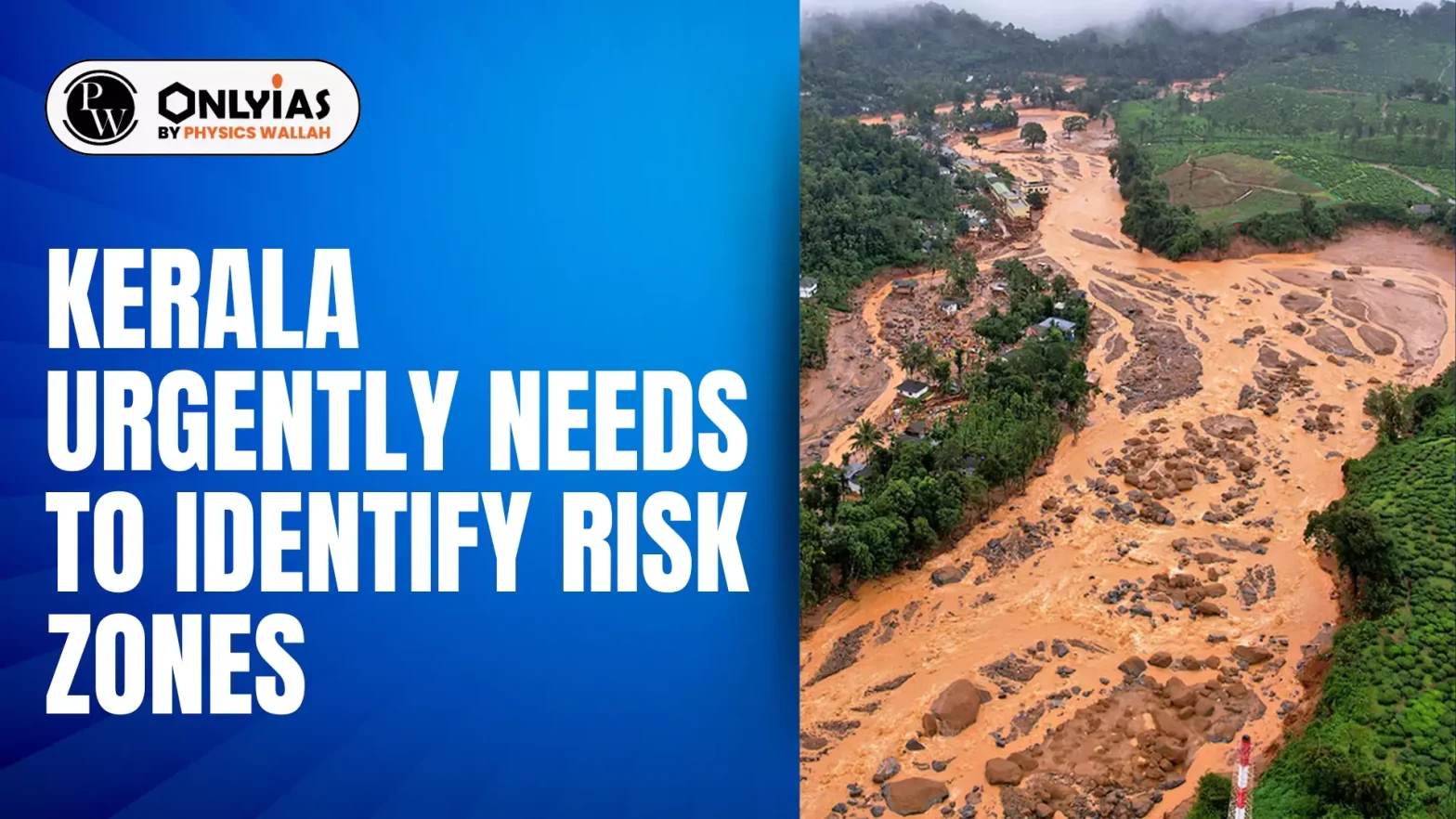Recent landslides in Wayanad district, Kerala, have highlighted the urgent need for improved disaster management strategies due to the significant loss of life and ongoing challenges posed by climate change.
| Kerala, located between the Arabian Sea and the Western Ghats, was once seen as a disaster-free zone. However, the increasing frequency and severity of landslides and floods suggest that “God’s Own Country” is now experiencing the consequences of God’s wrath. |
Reasons Behind the Vulnerabilities and Disasters
1. Human Intervention:
- Development Activities: Unplanned settlements have emerged along the coastline, exacerbating risks.
- Encroachment: Human encroachment in forests and development projects often overlook structural integrity, topography, and drainage systems.
- Infrastructure Strain: The inability to accommodate the growing human load has led to increased vulnerabilities.
- Population Growth: Rising population adds more pressure on the state’s resources, contributing to infrastructure collapse and disaster susceptibility.
Enroll now for UPSC Online Course
| Uttarakhand faces similar challenges, as infrastructure developed for the Char Dham Yatra has no doubt enhanced transportation but also heightened disaster vulnerability. |
2. Climate Change: The impact of climate change, such as the rapid warming of the Arabian Sea, has intensified weather patterns, leading to an increased frequency and severity of events like cyclones and floods in Kerala. Specific impacts include:
- Increased heat content in the Indian Ocean since the 2000s, contributing to cyclogenesis.
- An anomalous rise of 1.2°C in summer sea surface temperatures.
- The severe impact of Cyclone Ockhi in 2017, which exemplified the trend shift from the Bay of Bengal to the Arabian Sea and highlighted the state’s vulnerability to climate-related disasters.
| Note: The World Meteorological Organization described the Kerala floods of 2018 as the ‘floods of the century’ and attributed the disaster to climate change. |
Addressing Disaster Risks in Kerala
As the ‘safe operating space‘ in Kerala is diminishing due to global environmental change, it becomes essential to continuously analyse and identify emerging challenges. To effectively address disaster risks, the following steps can be taken:
Check Out UPSC Modules From PW Store
- Identifying Susceptible Zones: Assess geological factors, slope stability, hydrological parameters, and human activities to pinpoint areas at risk. For instance:
- Coastal Regions: These are particularly vulnerable due to coastal erosion and sea surge, which can be mitigated through vegetation restoration.
- Low-lying Areas: Regions surrounding Vembanad Lake frequently experience flooding during monsoons.
- Landslide Inventory Map: Creating a map highlighting landslide-prone areas along the Western Ghats.
- This includes monitoring disrupted river routes and identifying tectonic shifts that have caused possible cracks in the landscape.
- There is a critical need to fill the knowledge gap regarding landslide incidents.
- Paradigm shift in approach: It is necessary to move from a top-down to a bottom-up and follow a proactive strategy.
- This new approach should encompass all aspects of the disaster cycle, including preparedness, resilience, risk reduction, mitigation, reconstruction, recovery, response, and relief, ultimately promoting “Build Back Better” practices.
- Quadruple Helix Model for Collaboration: A collaborative framework involving community organisations, academia, government, and private industry can enhance disaster management efforts by improving the state’s capacity for effective disaster response and resilience building.
- Monitoring Mechanisms: Implement systems to monitor triggers like rainfall and seismic activity, enabling timely warnings for affected communities.
- Community Engagement: Government efforts must be complemented by community involvement to ensure a comprehensive and effective disaster management strategy.
| The Sendai Framework for Disaster Risk Reduction provides guidelines for disaster risk reduction. |
Enroll now for UPSC Online Classes
Conclusion
Thus, effectively addressing disasters in Kerala necessitates recognising both social and physical components within a social-ecological framework. This approach ensures a harmonious balance between ecological sustainability and development, ultimately strengthening resilience against future risks.
![]() 5 Oct 2024
5 Oct 2024

